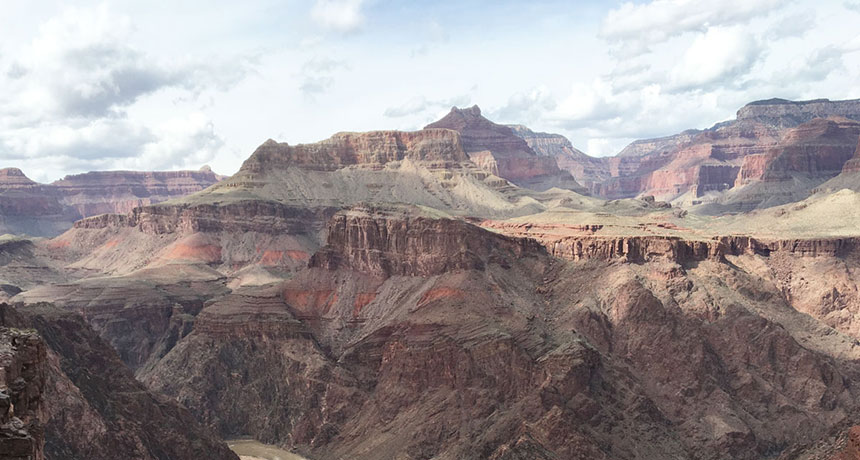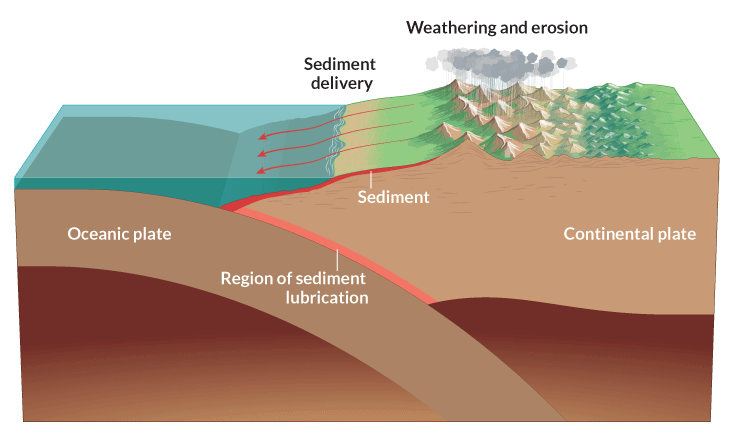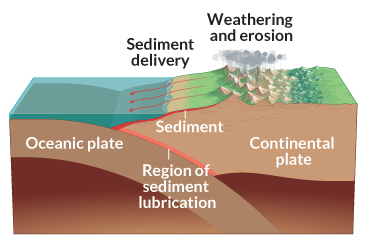
LOST TIME Intense erosion, due to widespread glaciation about 750 million years ago, erased about 175 million years of the rock record in the Grand Canyon. A study proposes that such a huge influx of eroded sediments to the oceans could have sped up the movements of Earth’s plates.
Alex Demas/USGS
- More than 2 years ago
Vast amounts of sediment eroded from Earth’s continents were necessary to lubricate the wheel of plate tectonics, scientists propose. The idea offers a new angle on long-standing riddles about the origin and evolution of the planet’s global surface recycling system, one that is unique in the solar system.
Earth’s interior holds a lot of heat, even 4.6 billion years after the planet’s formation. For the first 1 billion to 1.5 billion years of Earth’s history, the planet’s insides were still too hot for the lithosphere to cool and thicken (SN Online: 9/21/17). That’s one necessary ingredient for modern plate tectonics, the ongoing collisions and separations of large “plates” of lithosphere, the jigsaw puzzle pieces that make up the hard outer shell of the planet.
Eventually the planet cooled enough for the crust to form. And then, around 3 billion years ago, Earth’s first continents arose. That ultimately added another key ingredient that allowed plate tectonics to get under way, geophysicist Stephan Sobolev and geologist Michael Brown argue in the June 6 Nature. Massive amounts of sediment scraped by glaciers off the continents were essential to kick off the lithospheric dance, the researchers say. That soft sediment was slowly deposited in deep ocean trenches, where it reduced the amount of friction between a sinking, or subducting, plate and the overlying plate, speeding up plate tectonics.
Giant influxes of sediment to the oceans, related to worldwide glaciation events such as an event that lasted from about 750 million to 630 million years ago, could explain why plate tectonics has sometimes kicked into a higher gear, Sobolev and Brown say. And a dearth of such sediments in the rock record could also explain periods of sluggish tectonic movement, including the boring billion, a period of lithospheric — and evolutionary — stability between 1.8 billion and 800 million years ago.
Lubricated slab
Three periods of global glaciation leading to intense continental erosion in the last 3 billion years correlate with times of increased plate motion, a study finds. Researchers say that the eroded sediment helped speed up subduction, and thus plate tectonics, by reducing friction at the interface between plates.


Sobolev, of the University of Potsdam in Germany, and Brown, of the University of Maryland in College Park, combined data on how sediments reduce friction at subduction zones in modern times with geologic records of glaciation and the growth of mountains as well as geochemical data standing in for ancient subduction speeds. From these datasets, the team created a unified picture of when plate tectonics has sped up or slowed down during the last 4 billion years of Earth’s history.
The cycle sped up three times, the team found, with each period lasting at least several hundred million years. The first began about 2.8 billion years ago, the second about 2.3 billion years ago and the third about 750 million years ago. Each of those time periods corresponds to a time when the erosion of the continents would have also increased, delivering larger loads of sediment to the oceans that could then have lubricated subducting slabs.
The earliest period followed the initial uplift of continents out of the oceans. And all three followed major glaciation periods. Glaciers are efficient land-eroders, bulldozing sediment ahead of them and ultimately to the sea. The largest surface erosion event in Earth’s history, known as the Great Unconformity, followed the great Snowball Earth glaciation. That event, the researchers say, kick-started the modern era of active, continuous plate tectonics.
The hypothesis is “intriguing,” but there is a lot more work to be done to test it, says Whitney Behr, a geologist at ETH Zurich who wrote a commentary in the same issue of Nature.
For example, she notes, there are the competing influences of higher mountain topography — which produces more sediment — and the increase in friction that that extra mass can also create. And because Earth’s lithosphere and climate are different today from the past, she says, more work needs to be done to determine the lubricating power of ancient sediments.
Editor’s note: This story was updated June 14, 2019, to correct that it was the first 1 billion to 1.5 billion years of Earth’s history that the planet’s interior was too hot for the lithosphere to cool and thicken (not the first 1 million to 1.5 million years).






